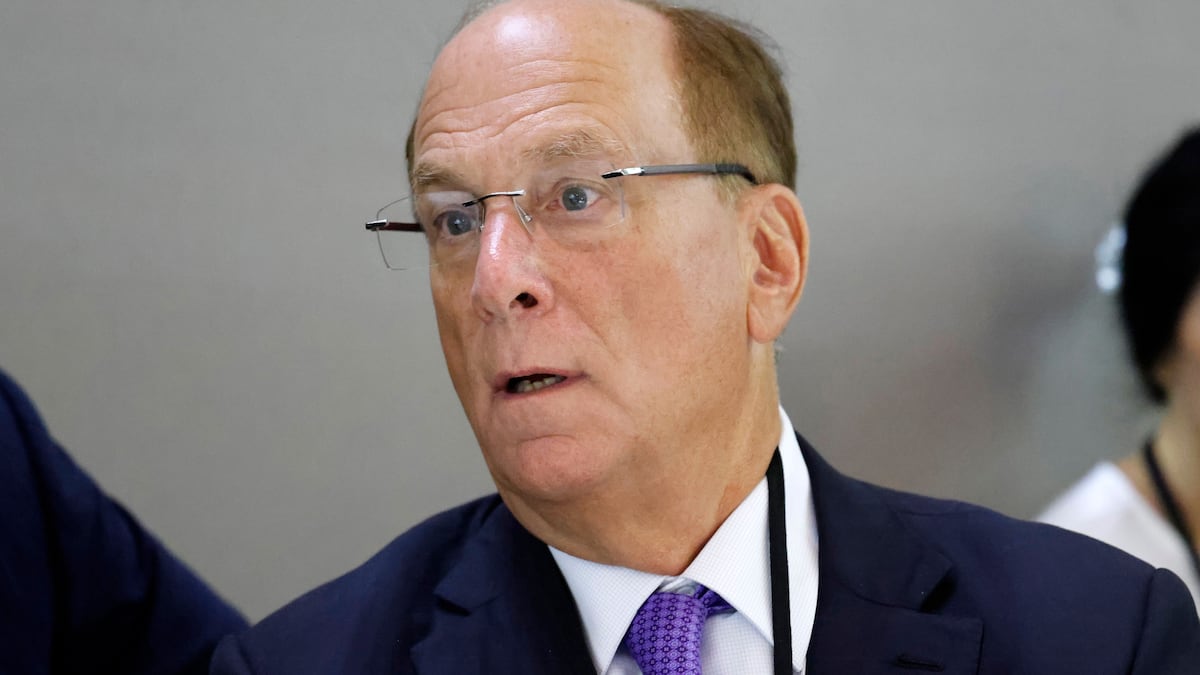- Financial institutions have long wondered whether blockchain technology can streamline the capital markets.
- Regulatory barriers are just one obstacle to rewiring market infrastructure.
- A bull market is boosting the proposition once again.
Larry Fink should be happy.
The CEO of BlackRock has seen the Wall Street giant’s spot Bitcoin exchange-traded fund cross $10 billion in flows since its January launch.
However, Fink’s ultimate goal is “the tokenisation of every financial asset,” he said in January.
Real-world assets
Wall Street’s interest in tokenising financial assets like stocks, bonds, and funds so they can be traded and tracked on the blockchain is scaling up.
And no wonder — tokenised “real-world assets” will be worth $10 trillion by 2030, by some estimates.
While retail traders are whipping themselves into a frenzy over the latest Bitcoin bull run, traditional financial behemoths are playing the long game.
So far, realising that opportunity has meant facing technological challenges, a lack of market infrastructure, and regulatory uncertainty.
That may be about to change.
For more than a decade, investment banks and other financial institutions have been experimenting with blockchain technology to see if it can make the capital markets more efficient by cutting out intermediaries, improving record-keeping, and accelerating trading speeds.
Those involved say they face a host of complex obstacles that have often resulted in discarded projects and failed startups.
Among the challenges? Blockchain doesn’t scale well, it’s too transparent for competitive institutions and client confidentiality, and it presents cybersecurity risks.
Ahead of its time
And then there’s the fact that the technology has been tainted in the eyes of regulators by association with cryptocurrencies and scandals like the collapse of FTX.
Others say blockchain is so far ahead of its time that banks are only just getting comfortable with it, and plenty of projects are proving the concept.
- Swiss investment bank UBS launched a digital bond that settles on both digital and traditional exchanges.
- French bank Societe Generale issued a digital green bond on the Ethereum blockchain.
- London-headquartered HSBC is one of the banks that uses Broadridge’s service for repurchase agreement settlement.
Creaking tech
It’s not entirely surprising that investment banks are keen on seeing what blockchain can do.
To a crypto native, traditional market structure looks impossibly inefficient.
It is punctuated by fee-charging intermediaries — exchanges, transfer agents, brokers, clearinghouses, and custodians — that keep track of the asset and facilitate its journey from seller to purchaser.
A shocking amount of this work is done on 20th-century software — spreadsheets, fax machines, and centralised databases.
The promise of blockchain as an almost instantaneously updated record of ownership is that it could do away with this legacy tech.
There’s a problem, though.
Many of the securities that exist aren’t “native” to a chain in the way that Bitcoin or Ether are — they’re just digital representations of assets that have been issued and stored in the traditional way in a custodian bank.
And that’s because securities market structure, middlemen and all, exists to satisfy regulatory requirements, mitigating risk and keeping conflicting interests apart.
To reap the full benefits of tokenisation, there needs to be a new market infrastructure in place.
Tokenised securities in places like the UK and US must run on these rails, just as their traditional counterparts do.
Current projects are helpful innovations, say promoters like banking trade body UK Finance, but most are automating only part of the trade lifecycle.
To reap the full benefits of tokenisation, there needs to be a new market infrastructure in place.
Regulators coming round
So far, financial institutions have faced reams of red tape in their tokenisation efforts.
“Once you start looking at tokenising financial assets, it’s tougher from a regulatory perspective,” Nathan Catania, a partner at XReg Consulting, told DL News.
“You end up falling under an established financial regime.”
Now, however, regulators are starting to warm to tokenisation.
Market watchdogs in the UK, the EU, and in the US have launched sandboxes enabling them to monitor firms while they experiment with tokenisation — with a view to perhaps changing existing laws to accommodate the innovation.
It’s too soon to know if these regulatory efforts will be successful, but they are an encouraging sign, Catania said.
“The sandboxes are positive, especially for jurisdictions that don’t want to risk putting in place a full-blown regime that might not be fit for purpose,” he said.
“They allow them to experiment, understand what works and where the risks really are.”
Reach out to the author at joanna@dlnews.com
